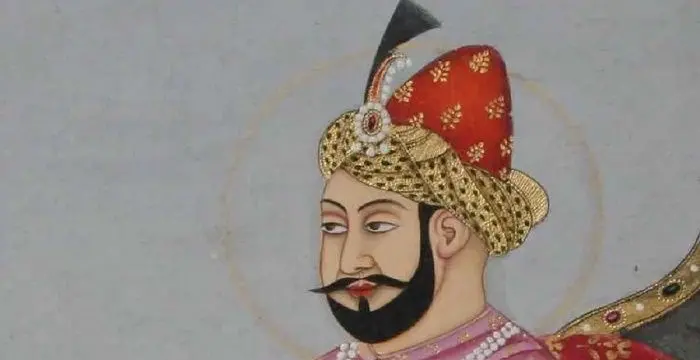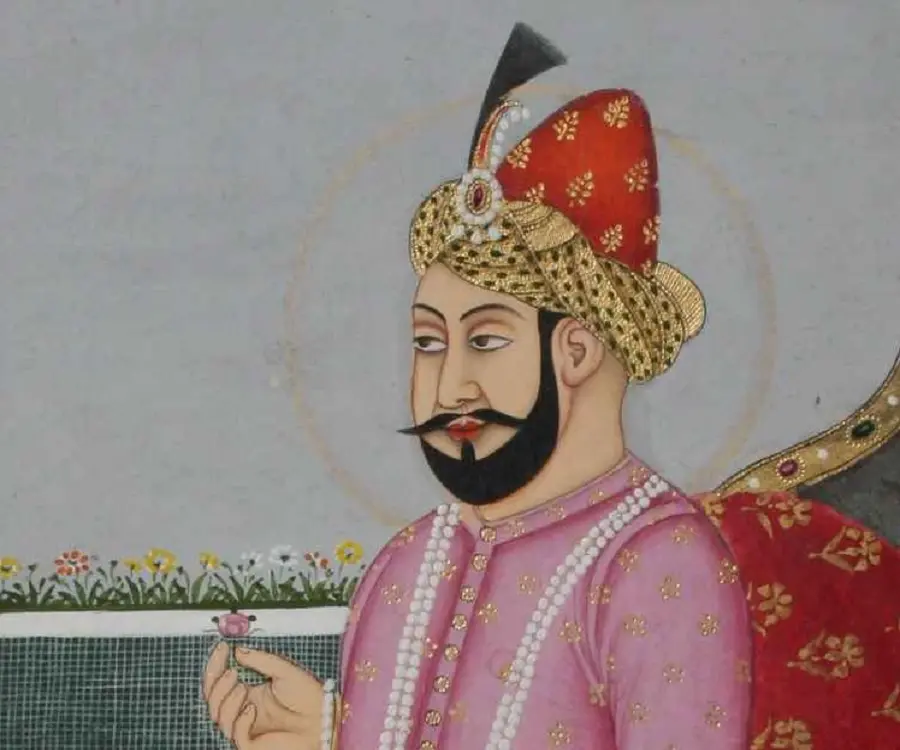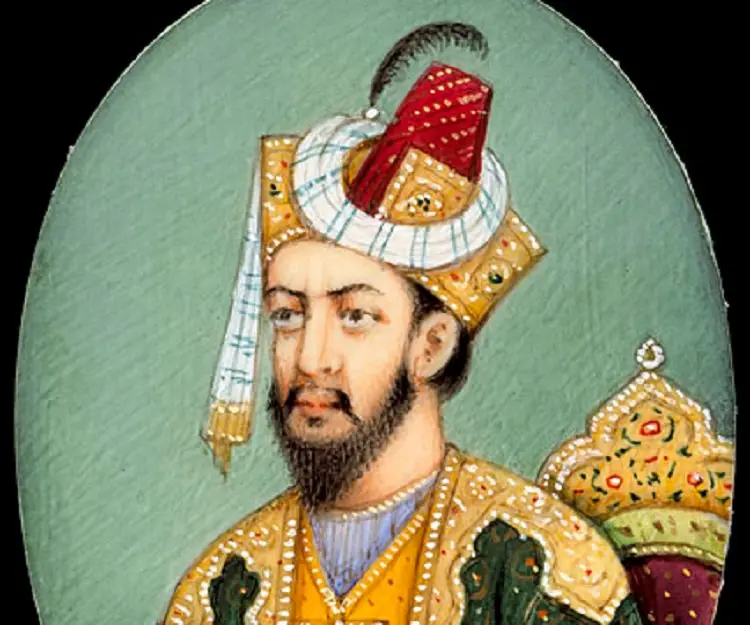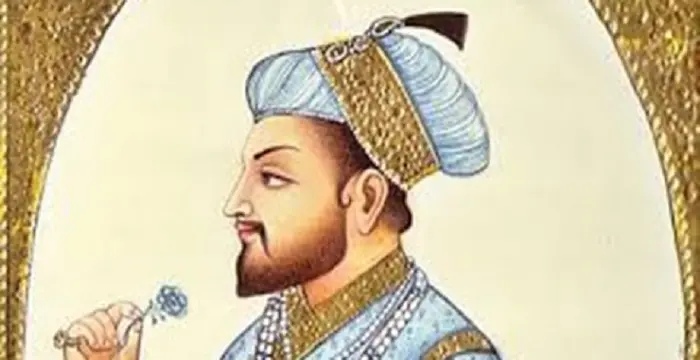
Humayun - Kings, Career and Facts
Humayun's Personal Details
Humayun was the second Mughal ruler of territories in the Indian subcontinent
| Information | Detail |
|---|---|
| Birthday | March 17, 1508 |
| Died on | January 27, 1556 |
| Nationality | Indian |
| Famous | Historical Personalities, Emperors & Kings, Emperors, Kings, Mughal Emperor |
| Spouses | Hamida Banu Begum |
| Siblings | Gulbadan Begum |
| Known as | Nasiruddin Mohammad Humayun |
| Childrens | Akbar |
| Cause of death |
|
| Birth Place | Kabul |
| Religion | Islam, Sunni Islam |
| Gender | Male |
| Father | Babur |
| Sun Sign | Pisces |
| Born in | Kabul |
| Famous as | Mughal Emperor |
| Died at Age | 47 |
// Famous Kings
Sundiata Keita
Sundiata Keita was the founder of the Mali Empire in West Africa. This biography profiles his childhood, early life, struggles, founding of empire, rule, administration, achievements and also gives some fun facts.
Ashoka
Ashoka was the third emperor of the Mauryan Dynasty and ruled almost the entire Indian subcontinent. This biography profiles his childhood, life, reign, achievements and timeline
Murad IV
Murad IV was one of the mighty Sultans in the history of the Ottoman Empire. This biography profiles his childhood, family, accession, rule, administration and timeline.
Humayun's photo
Who is Humayun?
Humayun was the second Mughal ruler of territories in the Indian subcontinent including what is now Afghanistan, Pakistan, and parts of northern India. He was the son and successor of Babur, the founder of the Mughal dynasty. He became the Mughal emperor at the age of 23. He was inexperienced at the time of ascending to the throne and faced bitter rivalry from his half-brother Kamran Mirza who ruled over Kabul and Lahore. Even though Humayun was a brave soul and an adventurous ruler, he lost several territories to his rivals over the ensuing years. However, he was not someone to accept defeat so easily and he successfully won back his territories after a few years. Many years of his reign were spent in defending territories from his rivals, and he was even forced to seek refuge in Persia for some time. When he returned to his kingdom as the undisputed Mughal leader after the death of his rivals, he set about consolidating the empire for the generation to come. He embarked on several campaigns to expand the Mughal territories and at the time of his death, the Mughal Empire spanned almost one million square kilometers. Even though not counted amongst the greatest Mughal emperors, Humayun ensured that he left behind a rich legacy for his son Akbar.
// Famous Emperors
Sundiata Keita
Sundiata Keita was the founder of the Mali Empire in West Africa. This biography profiles his childhood, early life, struggles, founding of empire, rule, administration, achievements and also gives some fun facts.
Ashoka
Ashoka was the third emperor of the Mauryan Dynasty and ruled almost the entire Indian subcontinent. This biography profiles his childhood, life, reign, achievements and timeline
Murad IV
Murad IV was one of the mighty Sultans in the history of the Ottoman Empire. This biography profiles his childhood, family, accession, rule, administration and timeline.
Childhood & Early Life
Humayun was born on 17 March 1508, in Kabul, Mughal Empire (present-day Afghanistan), to Babur, the founder of the Mughal dynasty and his wife Maham Begum. He had several siblings; many of his brothers and half-brothers would become his bitter rivals in future.
He received an upbringing typical for princes of his stature. He learned Turki, Arabic, and Persian and was interested in mathematics, philosophy, and astrology. He also received military training and was appointed governor of Badakhashan at the age of 20.
He proved his bravery as a young governor and fought at Panipat and Khanwa, two decisive battles in Indian history. His father ensured that he was trained as an administrator and a warrior.
Accession & Reign
Babur died and Humayun ascended to the throne on 26 December 1530 as the second emperor of the Mughal dynasty. He faced bitter rivalry from his brothers, and also faced threat from other rulers such as Sultan Bahadur and Sher Shah Suri (Sher Khan). His half-brother Kamran treacherously took the Punjab and the Indus Valley.
During the initial years of his reign, both his major rivals extended their territories. Sultan Bahadur planned to attack Humayun’s territories, but Humayun acted quickly and went on to capture the forts of Mandu and Champaner, forcing Bahadur to take up refuge with the Portuguese. Bahadur eventually died in 1537.
Meanwhile Sher Shah Suri was consolidating his power in Bihar and Bengal and was emerging as a powerful ruler. He challenged the Mughal rule and even though Humayun was able to temporarily oust Sher Shah from Bengal, he could not defend his territories from Sher Shah for long.
Sher Shah successfully defeated the Mughals at Chausa in 1539 and over 8,000 Mughal troops were killed in the bloody battle. This considerably weakened Humayun’s strength, and to add to his miseries, his own brothers were also plotting against him. Sher Shah Suri continued his attacks on the Mughals and drove Humayun to the west.
The Mughals faced the growing army of Sher Shah at the Battle of Kanauj in 1540 where once again the Mughals were defeated. Further defeats followed the Mughals and the emperor Humayun was compelled to quit the battlefield. Sher Shah also captured Agra, the capital city of the Mughals, and forced Humayun to flee from India.
Humayun fled to Persia with his wife and a few companions. There Shah Tahmasp not only offered him refuge, but also treated him as a royal visitor. With military support from Shah Tahmasp, Humayun proceeded to claim Kandahar and Kabul.
Meanwhile Sher Shah Suri died in 1545, and his son and successor also died within a few years of his father in 1554. The ensuing political chaos provided Humayun with the perfect opportunity to reclaim his empire. He gathered a large army which he placed under the leadership of Bairam Khan, a great military strategist. Bairam Khan led the army and successfully laid claim to the throne for the Mughals. Once again Humayun claimed Babur’s throne on 23 July 1555.
After becoming the Mughal emperor once again, he embarked on a series of military campaigns to extend his reign over areas in eastern and western India. At the time of his death, the Mughal Empire spanned almost one million square kilometers.
Major Battles
Humayun was not well known for being a great military leader. However, he recognized his limitations and therefore placed his army under the leadership of Bairam Khan while attempting to reclaim the throne of Delhi from the descendants of Sher Shah Suri. This proved to be a wise move as Bairam Khan was successful in recapturing the capital for Humayun.
Personal Life & Legacy
Humayun had several wives and concubines, the most notable ones being Hamida Banu Begum, Mah Chuchak Begum, Bibi Gunwar Begum, Khanish Aghacha, Shaham Aghacha, and Maywa Jan Aghacha. He fathered a number of children including son Akbar who would one day become known as one of the greatest Mughal emperors.
He was descending the staircase from his library with his arms full of books when the muezzin announced the Azaan (the call to prayer). The emperor tried to kneel in reverence on hearing the summons, but tripped and fell down the stairs. He was seriously injured as a result and died three days later on 27 January 1556. He was succeeded by his son Akbar.
Humayun was known for his peaceful personality and patience which earned him the title ’Insān-i-Kamil (Perfect Man), among the Mughals.
// Famous Mughal Emperor
Akbar
Mughal emperor Akbar was one of the greatest monarchs in the history of India. This biography profiles his childhood, life, rule, achievements and timeline
Shah Jahan
Shah Jahan was the fifth Mughal Emperor of India. He is famous for constructing the Taj Mahal. This biography of Shah Jahan provides detailed information about his childhood, life, achievements, works & timeline.
Jahangir
Jahangir was the fourth Mughal emperor, counted amongst the greatest Indian Emperors. This biography of Jahangir provides detailed information about his childhood, life, achievements, works & timeline.
Humayun biography timelines
- // 17th Mar 1508Humayun was born on 17 March 1508, in Kabul, Mughal Empire (present-day Afghanistan), to Babur, the founder of the Mughal dynasty and his wife Maham Begum. He had several siblings; many of his brothers and half-brothers would become his bitter rivals in future.
- // 26th Dec 1530Babur died and Humayun ascended to the throne on 26 December 1530 as the second emperor of the Mughal dynasty. He faced bitter rivalry from his brothers, and also faced threat from other rulers such as Sultan Bahadur and Sher Shah Suri (Sher Khan). His half-brother Kamran treacherously took the Punjab and the Indus Valley.
- // 1537During the initial years of his reign, both his major rivals extended their territories. Sultan Bahadur planned to attack Humayun’s territories, but Humayun acted quickly and went on to capture the forts of Mandu and Champaner, forcing Bahadur to take up refuge with the Portuguese. Bahadur eventually died in 1537.
- // 1539Sher Shah successfully defeated the Mughals at Chausa in 1539 and over 8,000 Mughal troops were killed in the bloody battle. This considerably weakened Humayun’s strength, and to add to his miseries, his own brothers were also plotting against him. Sher Shah Suri continued his attacks on the Mughals and drove Humayun to the west.
- // 1540The Mughals faced the growing army of Sher Shah at the Battle of Kanauj in 1540 where once again the Mughals were defeated. Further defeats followed the Mughals and the emperor Humayun was compelled to quit the battlefield. Sher Shah also captured Agra, the capital city of the Mughals, and forced Humayun to flee from India.
- // 1545 To 1555Meanwhile Sher Shah Suri died in 1545, and his son and successor also died within a few years of his father in 1554. The ensuing political chaos provided Humayun with the perfect opportunity to reclaim his empire. He gathered a large army which he placed under the leadership of Bairam Khan, a great military strategist. Bairam Khan led the army and successfully laid claim to the throne for the Mughals. Once again Humayun claimed Babur’s throne on 23 July 1555.
- // 27th Jan 1556He was descending the staircase from his library with his arms full of books when the muezzin announced the Azaan (the call to prayer). The emperor tried to kneel in reverence on hearing the summons, but tripped and fell down the stairs. He was seriously injured as a result and died three days later on 27 January 1556. He was succeeded by his son Akbar.
// Famous Historical Personalities
Sundiata Keita
Sundiata Keita was the founder of the Mali Empire in West Africa. This biography profiles his childhood, early life, struggles, founding of empire, rule, administration, achievements and also gives some fun facts.
Ashoka
Ashoka was the third emperor of the Mauryan Dynasty and ruled almost the entire Indian subcontinent. This biography profiles his childhood, life, reign, achievements and timeline
Jetsun Pema
Jetsun Pema is the Queen consort of Bhutan. Check out this biography to know about her childhood, family life, achievements and fun facts about her life.
Murad IV
Murad IV was one of the mighty Sultans in the history of the Ottoman Empire. This biography profiles his childhood, family, accession, rule, administration and timeline.
Xerxes I
Xerxes I (Xerxes the Great) was the fourth and the most famous king of the Archaemenid dynasty of Persia. This biography profiles his childhood, family, personal life, life history, achievements, campaigns, administration, death and other facts.
Sargon of Akkad
Sargon of Akkad, also called ‘Sargon the Great’, ‘Sarru-Kan’ and ‘Shar-Gani-Sharri’, was the founder and first king of the Akkadian Empire. This biography profiles his childhood, life, rule, administration, timeline, and gives some fun facts.
Humayun's FAQ
What is Humayun birthday?
Humayun was born at 1508-03-17
When was Humayun died?
Humayun was died at 1556-01-27
Where was Humayun died?
Humayun was died in Delhi
Which age was Humayun died?
Humayun was died at age 47
Where is Humayun's birth place?
Humayun was born in Kabul
What is Humayun nationalities?
Humayun's nationalities is Indian
Who is Humayun spouses?
Humayun's spouses is Hamida Banu Begum
Who is Humayun siblings?
Humayun's siblings is Gulbadan Begum
Who is Humayun childrens?
Humayun's childrens is Akbar
What is Humayun's cause of dead?
Humayun dead because of Accident
What is Humayun's religion?
Humayun's religion is Islam, Sunni Islam
Who is Humayun's father?
Humayun's father is Babur
What is Humayun's sun sign?
Humayun is Pisces
How famous is Humayun?
Humayun is famouse as Mughal Emperor










